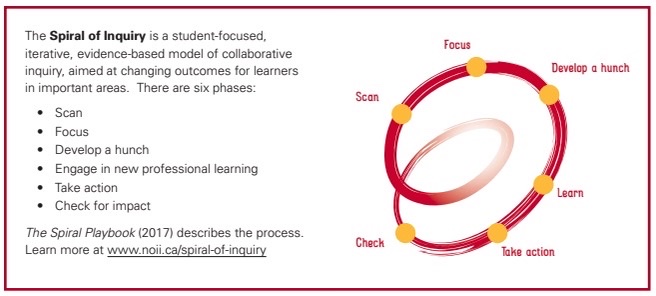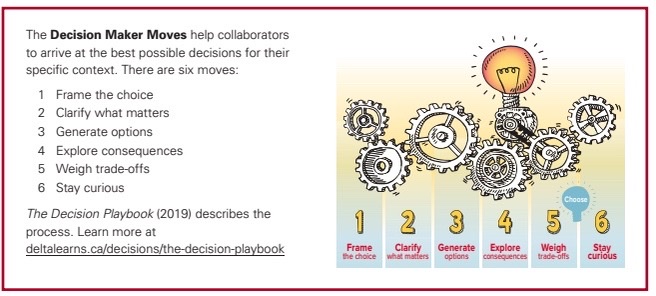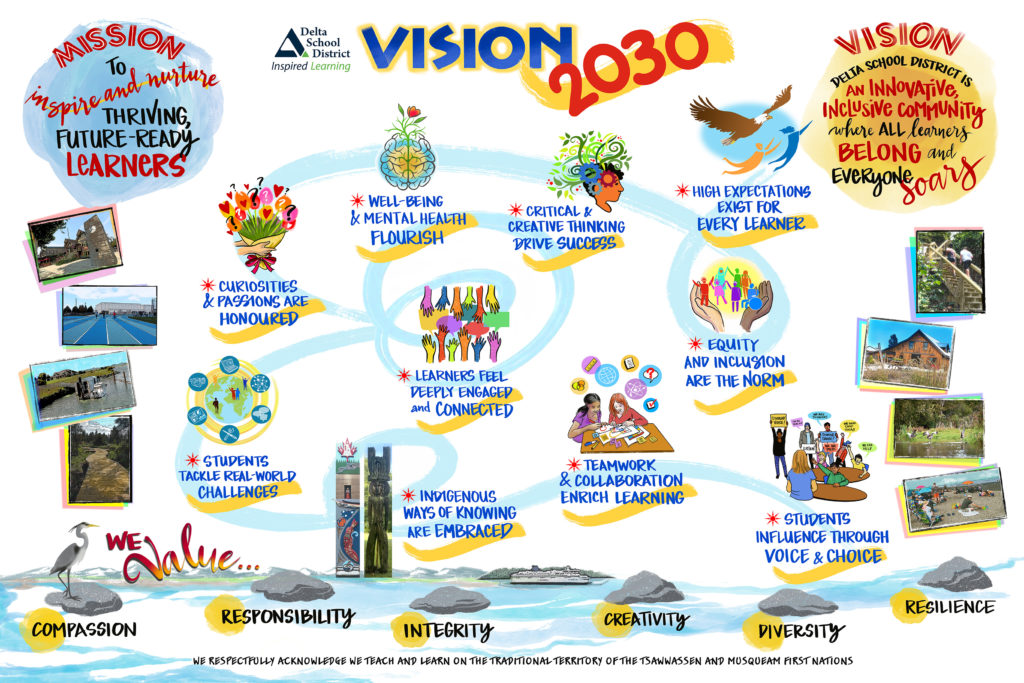On a daily basis, Delta students are demonstrating many elements of the district’s Vision 2030, for example, using critical and creative thinking to drive success, enriching their learning through teamwork and collaboration, exerting influence through voice and choice, and tackling real-world challenges.
“We often talk about how youth are the leaders of tomorrow, but actually youth are leaders today,” said Brooke Moore, District Principal of Inquiry and Innovation. “Already, they are exercising and exploring their leadership in a variety of spaces such as the Delta Youth Advisory Council (DYAC), social justice classes, district committees and leadership courses.”
In addition, teachers are intentionally creating space for student agency and leadership in their classrooms to support students in making a positive and thoughtful impact in their own lives and communities. Many teachers and students have been using decision science and collaborative inquiry to further engage in this learning, such as the Spiral of Inquiry and the Decision Maker Moves (www.deltalearns.ca/decisions).


“Since an inquiry is basically a series of decisions, these two frameworks work well together,” said Brooke Moore. “With the Spiral of Inquiry, there may be a strong temptation to leap into action. The Decision Maker Moves slow the urge to leap and keep teams on track to achieve the best possible decisions for their inquiry.”
Below are just some of the examples of these frameworks in action:
South Delta Secondary and Beach Grove Elementary
Staff at South Delta and Beach Grove found these frameworks helped students think more deeply and led to more equity in the classroom by encouraging them to listen to all voices and opinions, examine biases and consider multiple option before making a decision or deciding on an action. They also found that going through the steps helped build better relationships in the classroom, between staff and students, and between students themselves. Watch this video to see educators from South Delta Secondary and Beach Grove Elementary schools talking about the positive impact of using these frameworks.
Sands Secondary
Over the last four years, students at Sands have used these frameworks to tackle multiple concerns at their school, with inquiries into social media, racism and bias, and mental health.
“As well as benefitting the school community by looking into these important issues, the students themselves have felt a sense of self-determination in their learning and gained confidence in using their voices to make a real difference for other,” said Joanna Macintosh, Vice Principal, Sands Secondary.
Learn more here: https://www.deltasd.bc.ca/news-events/news/sands-secondary-students-spiral-into-solutions/ and here: https://youtu.be/ID0YNtZ6cW4
Gray Elementary
Gray Elementary students used the frameworks to dig deep into the question “What action can I take that would positively impact someone or something in my community?
“They researched agencies such as the food bank and the animal shelter to see what ways they could get involved, and then came up with three possible options. Carefully measuring each option with the criteria of our project (it should be – closely related to values, have a minimal cost, be COVID-19-friendly, able to measure impact in some way, and an achievable plan) helped them narrow down to the best choice,” said teacher Mary Messer.
The result, said Messer, was deeply-motivated kids communicating with agencies, teachers, and parents to acquire the support they needed to make it happen.
Read these stories from the Delta Optimist to learn more:
McCloskey Elementary
In the spring, more than 60 Grade 6 and 7 students started a spiral of inquiry into how they could make their school more inclusive. They worked through a series of questions to help define their purpose and motivation for developing their leadership such as: Why are you here? What do you notice? What do you want to create? What do we need to find out? How will you do that? This helped determine their vision for safety and belonging.
Next, they learned more about safety and belonging, before developing a student survey and analyzing the responses. Currently, they are in the process of choosing a focus and developing a hunch. Stay tuned for more!

